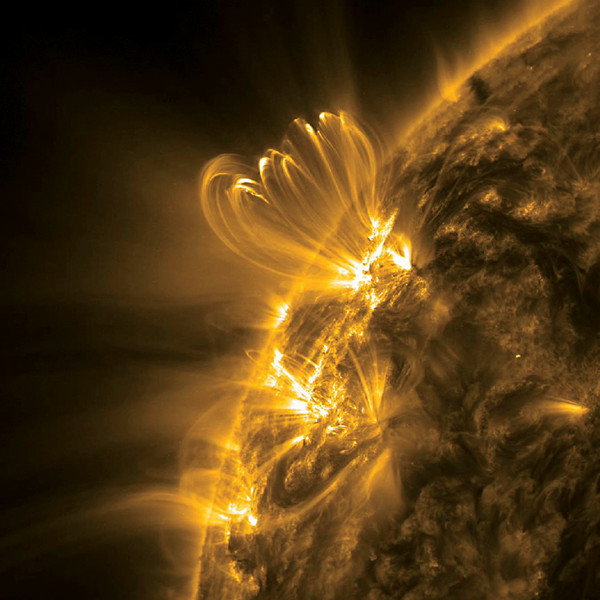
by Timothy Oleson Tuesday, November 4, 2014

An active region on the sun, as seen in extreme ultraviolet light by NASA's Solar Dynamics Observatory spacecraft. Credit: NASA/SDO.
The sun’s outer atmosphere, or corona, reaches temperatures of more than 1 million degrees Celsius, hundreds of times hotter than its visible surface. The reason for this has puzzled scientists, who so far have only been able to theorize explanations.
“Things usually get cooler farther away from a hot source. When you’re roasting a marshmallow you move it closer to the fire to cook it, not farther away,” said space scientist Jeffrey Brosius of Catholic University in Washington, D.C., and NASA’s Goddard Space Flight Center in a statement. Brosius is the lead author of a recent study published in the Astrophysical Journal that “gives the strongest evidence yet” in favor of one coronal heating theory in particular: nanoflares.
He and his colleagues analyzed data collected by a high-resolution spectrograph launched into space aboard a NASA sounding rocket in April 2013 with the goal of studying extreme ultraviolet light emitted by a so-called “active region” of the sun. Active regions are areas with strong magnetic fields that often produce solar flares and coronal mass ejections, and the wavelengths of light emitted give information about temperatures within these regions. In the data, Brosius’ team found evidence of small pockets of material as hot as 10 million degrees Celsius, suggesting that short-lived but frequent bursts of heat, known as nanoflares, likely maintain the corona’s sizzling temperatures.
In the same statement, Adrian Daw, also at NASA Goddard and a co-author of the study, called the findings “a real smoking gun for nanoflares.” Among the next steps is to explain what phenomenon is powering the nanoflares themselves.
© 2008-2021. All rights reserved. Any copying, redistribution or retransmission of any of the contents of this service without the expressed written permission of the American Geosciences Institute is expressly prohibited. Click here for all copyright requests.